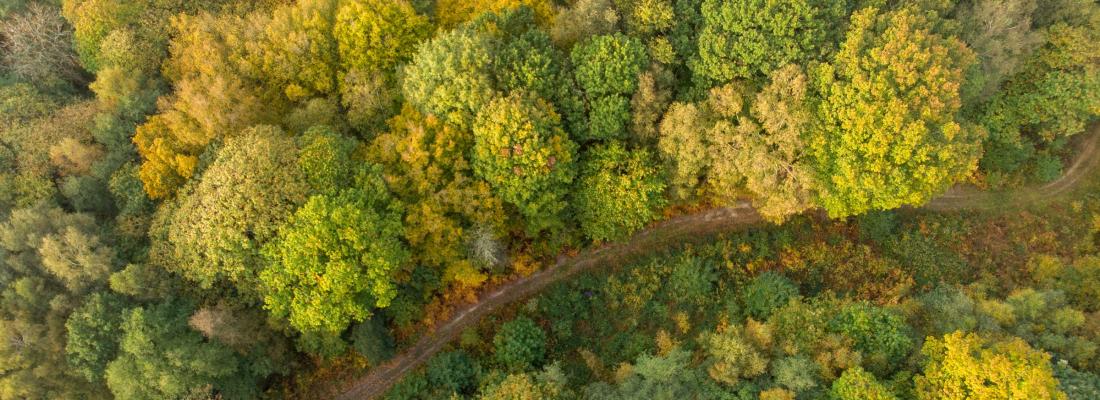Society and regional strategies Reading time 3 min
Encouraging forest management practices to increase European carbon sink capacity
Published on 17 October 2024

Forests continue to be the best natural means available to reduce CO2 emissions but, with climate change, they are increasingly under threat from wildfires, droughts and storms. Currently, the management of most European forests is largely aimed at wood production rather than investment in long-term health and resilience, and the benefits of carbon sequestration are looked on as non-essential short-term wins.
In the management of European forests, a sustainable long-term approach is needed. The EFI’s report on ‘Carbon Farming in the European Forestry Sector’ details how ‘carbon farming’, a set of practices enabling the capture and storage of carbon in the soil and in plants, can best be incorporated into forest management to maximise its mitigation potential and reduce the growing risk of wildfires.
Unveiled to members of the European Parliament, the European Commission, and to Europe’s national ministers at the EFI ThinkForest event, the report explains how the carbon storage capacity of European forests, which cover 40% of the EU’s land area, could be increased for the long term, helping the EU to achieve its target of carbon neutrality by 2050.
Introducing a form of temporary carbon credits for private owners
Around half of European forests are owned by private individuals, who are in need of greater incentives to prioritise long-term investment. The introduction of a form of temporary carbon credits – which take account of the temporary nature of carbon storage in natural ecosystems and would be recalculated each year – could provide owners with the necessary capital to abandon practices that deliver quick financial profits but degrade the environment, such as intensive logging and land clearance. They are necessary because the carbon storage achieved through natural processes is not permanent and the contract periods for carbon credits are finite. An offer involving temporary carbon credits for each year in which carbon is stored, rather than up-front payments or a payment schedule lasting many years, would ensure that credits accurately reflected the amount of carbon stored. The flexibility and repeatable nature of temporary carbon credits would thus foster confidence and transparency amongst buyers on the carbon market.
The report also suggests that temporary carbon credits should be treated as a financial contribution to action against climate change rather than as a compensation measure (offsetting). It recommends the development of geo-spatial monitoring and verification by third parties to ensure that the carbon credits generated by forest ‘carbon farming’ projects are a true reflection of their climate benefits. Furthermore, it recommends to prioritize market leakage prevention in new regulations along with implementing rigorous and transparent accounting practices for any residual leakage effects.
Last, afforestation – the (re)planting and regeneration of forests – emerges as the most effective method to increase the long-term storage of carbon. The report also considers species diversification, agroforestry, longer crop rotation cycles, reduced harvesting and peatland restoration and management to have important roles to play in reversing the effects of unsustainable land-use practices.
For the EU to fully exploit the potential of its forests as carbon sinks and tools for the mitigation of climate-associated risks, the report recommends that decision-makers should review policy frameworks to enable effective ‘carbon farming’ measures to be taken. Harmonisation of policies to safeguard resilience against the threats of climate change should help the EU to move closer to its 2050 carbon neutrality target.
Report: Carbon Farming in The European Forestry Sector
The report is based on the analysis of scientific, peer-reviewed literature. The keyword search was mainly limited to publications from the past 10 years (2013 – 2023). The geographical scope is limited to the EU 27 and Norway, to represent boreal, temperate and Mediterranean forests. The team examined a total of 118 publications, incorporating 349 case studies reporting changes in above-ground (83) and/or soil organic carbon (72). For each study, the carbon sequestration rate of selected management practices was taken directly from the study or estimated by calculating the amount of emission reduction and/or carbon removal attributed to a specific forest management activity compared to a ‘business-as-usual’ baseline scenario.
T. Chiti, A. Rey (coords.) (2024) Carbon Farming in The European Forestry Sector, European Forest Institute (EFI) https://doi.org/10.36333/fs17
